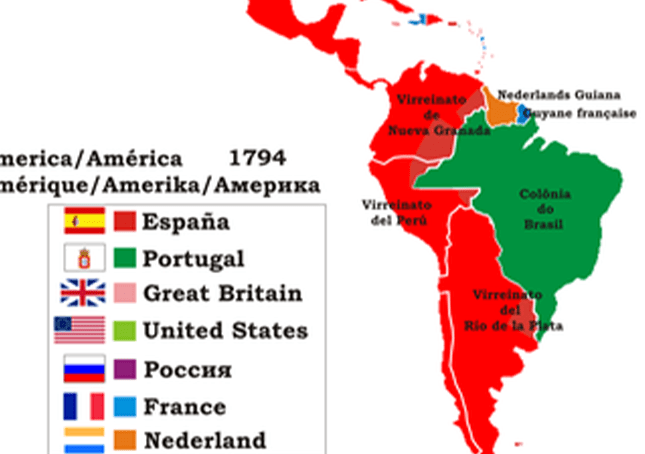European colonization of the Americas

Although the Norse had explored and colonized northeastern North America c. 1000 CE, a later and more well known wave of European colonization of the Americas took place in the Americas between about 1500 CE and 1800 CE, during the Age of Exploration. During this time period, several European empires—primarily Spain, Portugal, Britain, and France—began to explore and claim the natural resources and human capital of the Americas resulting in the disestablishment of some Indigenous Nations, and the establishment of several settler-colonial states.
Some formerly European settler colonies—including New Mexico, Alaska, the Prairies/northern Great Plains, and the “Northwest Territories” in North America; the Isthmus of Tehuantepec, the Yucatán Peninsula, and the Darién Gap in Central America; and the northwest Amazon, the central Andes, and the Guianas in South America—remain relatively rural, sparsely populated and Indigenous into the 21st century, however several settler-colonial states, including Brazil, Colombia, Mexico, Argentina, and the United States grew into settler-colonial empires in their own right. Many of the social structures—including religions, political boundaries, and linguae francae—that predominate the western hemisphere in the 21st century are descendants of the structures established during this period.
The rapid rate at which Europe grew in wealth and power was unforeseeable in the early 15th century because it had been preoccupied with internal wars and was slowly recovering from the loss of population caused by the Black Death. The grip the Ottoman Empire held on trade routes to Asia prompted western European monarchs to search for alternatives, resulting in the voyages of Christopher Columbus and the accidental re-discovery of the “New World.”
Upon signing the Treaty of Tordesillas in 1494, Portugal and Spain agreed to divide the Earth in two, with Portugal having dominion over non-Christian lands in the eastern half, and Spain over those in the western half.
Spanish claims included essentially the entire American continent, however the Treaty of Tordesillas granted the eastern tip of South America to Portugal, where it established Brazil in the early 1500s.
It quickly became clear to other western European powers that they too could benefit from voyages west and by the 1530s, the British and French had begun colonizing the northeast tip of the Americas. Within the century, the Swedish had established New Sweden, the Dutch had established New Netherland, and Denmark–Norway along with the other aforementioned powers had made several claims in the Caribbean, and by the 1700s, Denmark–Norway had revived its former colonies in Greenland, and Russia had begun to explore and claim the Pacific Coast from Alaska to California.
Deadly confrontations became more frequent at the beginning of this period as the Indigenous Nations fought fiercely to preserve their territorial integrity from increasing numbers of European colonizers, as well as from hostile neighbors bearing Eurasian technology.
Conflict between the various empires and the Indigenous people was the leading dynamic in the Americas into the 1800s, and although some parts of the continent were gaining independence from Europe by that time, other regions such as California, Patagonia, the “Northwest Territories”, and the northern Great Plains experienced little to no colonization at all until the 1800s.
